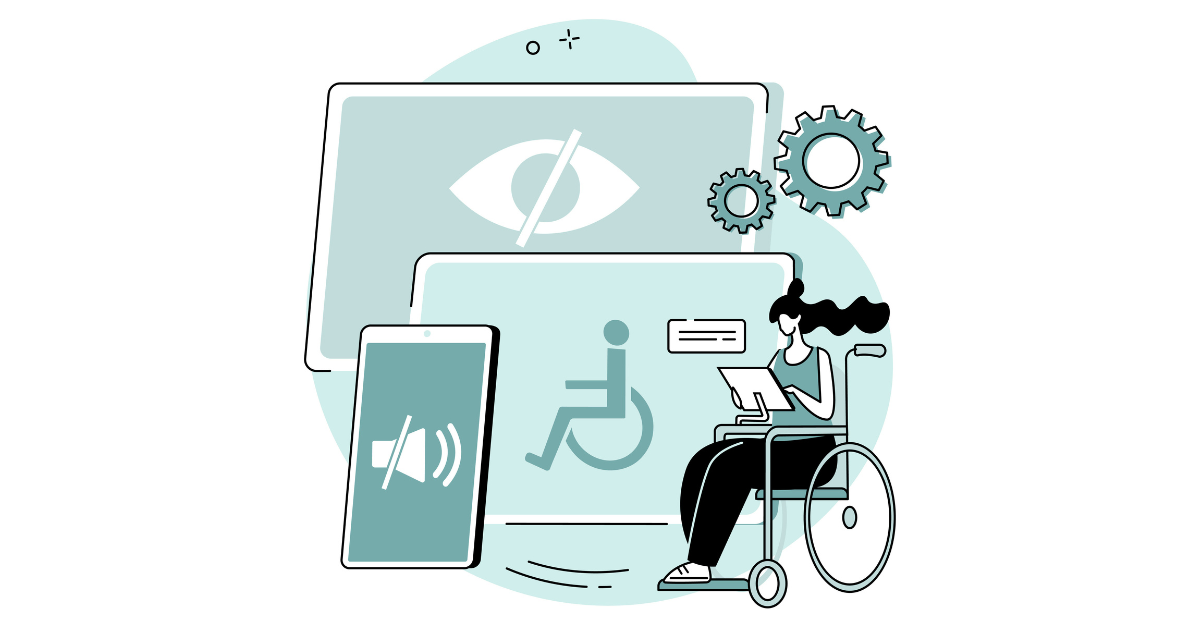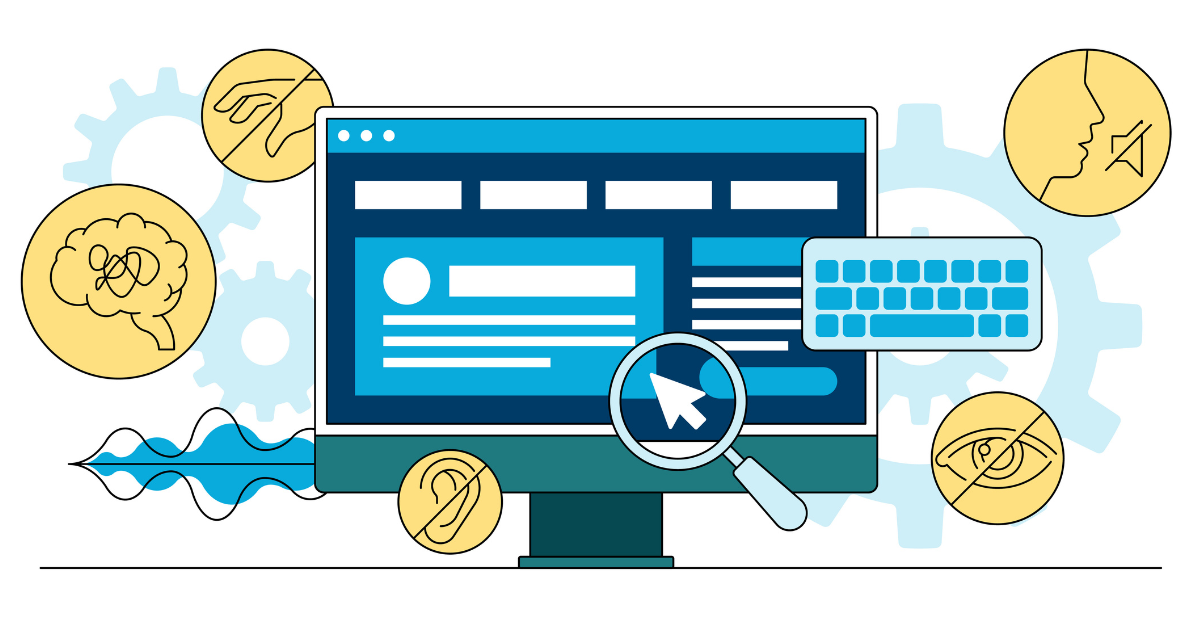Improving website accessibility can seem like a never-ending and always-challenging process. Mostly because, it is. It’s the collision of two complex worlds – legislation and web development – coupled with the realities of people with disabilities, which can be misunderstood unless you know first-hand what it’s like to live with a disability. The content on your website is also frequently changing, so it’s not a one-time optimization project. That’s where website accessibility statements can come in handy.
Before we dive in, if you need an overview on website accessibility, check out Natalie’s post on What you need to know about website ADA compliance.
What is an ADA accessible statement?
An ADA accessible statement is a message to your visitors about your commitment to making your website content accessible to everyone. Specifically, it’s often a single page on your website outlining the policies, goals, and current methods on making your website content and services accessible to people with disabilities, including visual, auditory, physical, speech, cognitive, language, learning, and neurological disabilities.
Why do you need it?
In some cases, you may be required to post an accessibility statement on your website. For example, many public organizations in European Union member states are required to provide an online accessibility statement. In other situations, a business case could be made for highlighting diversity and inclusion efforts. Also, according to Marc Dubin – who is the CEO of ADA Expertise Consulting, and also served as a senior trial attorney at the Justice Department in the disability rights section of the Civil Rights Division – the lack of an accessibility statement is often the first thing a plaintiff’s lawyer will look for when deciding who to sue for discrimination and non-compliance with the Americans with Disabilities Act (ADA) regulations.
Where should you put it?
It doesn’t matter as much where you put the accessibility statement on your website, but rather that it’s in an accessible format and easy to find. For example, it could be tucked in the About section of your website and you could include a link to it in the web footer so that visitors can access it from any webpage.
What does it need to include?
A website accessibility statement needs to include information that would help a visitor understand your approach to making website information and services accessible. Keep in mind that there are standards for promoting easy consumption of information on your website for people with language and learning disabilities. So this page should be easy to read and avoid technical and legal jargon. Here are a few things to include:
- A “we care and we’re working on it” statement regarding your commitment to website accessibility for people with disabilities
- The standard you’ve followed for making your web content accessible, such as WCAG 2.1, and ways you’ve ensured those standards are met, including how you’ve tested accessibility (i.e. the use of screen readers, policies on supported web browsers, etc.)
- A way for your website visitors to provide feedback if they encounter problems accessing information or services on your website, including how to reach out, what to include in the issue report, and any expectations on that process including typical response and remediation time
- Mentions of any known issues or areas of your website that are not accessible and any alternatives that exist for visitors to get the same information or service
- References to applicable national or local laws and policies
What are some examples?
For help generating an accessibility statement, check out the Web Accessibility Initiative’s Generator Tool, or browse these examples from other brands:
https://www.wellsfargo.com/about/diversity/accessibility/
https://www.communityamerica.com/accessibility
https://www.missouristate.edu/accessibility/
https://www.chipotle.com/about-us/accessibility.html
https://www.adidas.co.il/en/accessibility
http://www.nfl.com/accessibility
https://www.amctheatres.com/assistive-moviegoing
https://ncrtm.ed.gov/Accessibility.aspx
https://www.burnsmcd.com/footer/accessibility
http://static.usatoday.com/accessibility/
Sources:
- European Union Law archive
https://eur-lex.europa.eu/eli/dir/2016/2102/oj - The Business Case for Digital Accessibility:
https://www.w3.org/WAI/business-case/ - How to Write a Web Accessibility Statement & Why You Should Be Proactive
https://www.3playmedia.com/resources/recorded-webinars/wbn-07-12-2018-ada/ - Developing an Accessibility Statement:
https://www.w3.org/WAI/planning/statements/



